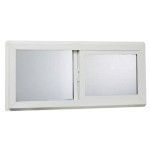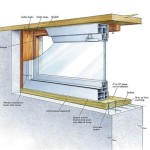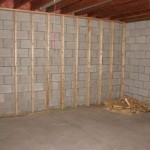Best Way to Paint Concrete Basement Walls
Painting concrete basement walls can significantly enhance the aesthetic appeal and overall functionality of the space. A properly painted basement not only looks cleaner and brighter but can also contribute to mold and mildew prevention by creating a more impermeable surface. However, painting concrete successfully requires careful preparation, selection of appropriate materials, and adherence to specific techniques. This article outlines the best practices for painting concrete basement walls, ensuring a durable and visually pleasing finish.
Preparation: The Foundation for a Successful Paint Job
The longevity and quality of any paint job depend heavily on the preparation stage. This is especially true for concrete basement walls, which often present challenges due to their porous nature and potential for moisture. Thorough preparation is paramount to achieving a lasting and aesthetically pleasing result. This section will detail the crucial steps involved in preparing concrete basement walls for painting.
Cleaning the Walls: The first and arguably most critical step is cleaning the concrete surface. Over time, concrete can accumulate dust, dirt, efflorescence (a white, powdery salt deposit), and even mold or mildew. These contaminants can prevent the paint from adhering properly, leading to peeling, bubbling, or other failures. Start by using a stiff-bristled brush or broom to remove loose debris. For stubborn dirt or efflorescence, a solution of water and trisodium phosphate (TSP) can be used. Always wear gloves and eye protection when working with TSP, as it can be irritating. Scrub the walls thoroughly with the TSP solution, then rinse with clean water. If mold or mildew is present, use a bleach solution (one part bleach to three parts water) to kill the growth. Again, wear appropriate safety gear and ensure adequate ventilation. Allow the walls to dry completely before proceeding to the next step.
Repairing Cracks and Imperfections: Concrete walls often develop cracks over time due to settling or other structural shifts. These cracks not only detract from the appearance of the walls but can also allow moisture to penetrate, potentially leading to further damage. Before painting, it is essential to repair these cracks using a concrete crack filler or patching compound. Clean out any loose debris from the cracks with a wire brush or crack chisel. Apply the crack filler according to the manufacturer's instructions, using a putty knife to smooth the surface and ensure it is flush with the surrounding concrete. Allow the filler to dry completely before sanding it smooth. For larger holes or damaged areas, a concrete patching compound may be required. These compounds typically come in pre-mixed formulas or require mixing with water. Apply the compound in thin layers, allowing each layer to dry before applying the next, until the hole or damaged area is filled. Sand the patch smooth once it is completely dry.
Addressing Moisture Issues: Moisture is a significant concern in basements, and it can wreak havoc on a paint job. Before painting, it is critical to identify and address any sources of moisture. This may involve repairing leaks, improving drainage, or installing a dehumidifier. To test for moisture, you can use a simple plastic sheet test. Tape a square of plastic sheeting (about 1 foot by 1 foot) to the wall with duct tape, sealing all edges. Leave it in place for 24-48 hours. If moisture condenses under the plastic, it indicates that moisture is seeping through the wall. If the moisture problem is significant, consider consulting a professional waterproofing contractor. Even if no visible moisture is present, it is advisable to apply a waterproof sealant or primer specifically designed for concrete basement walls. This will create a barrier that prevents moisture from migrating through the concrete and damaging the paint.
Choosing the Right Paint and Primer: Selecting for Durability and Performance
The selection of paint and primer is just as important as the preparation phase. Using the wrong type of paint can lead to premature failure, resulting in wasted time and resources. The concrete's inherent porosity and potential for moisture exposure necessitate a specialized approach to paint selection. This section will detail the key considerations for choosing the right paint and primer for concrete basement walls.
Primer Selection: Primer serves as a crucial base coat that promotes adhesion between the concrete and the paint. It also seals the porous surface of the concrete, preventing the paint from being absorbed excessively. For concrete basement walls, an alkali-resistant primer specifically designed for masonry surfaces is essential. These primers are formulated to withstand the high pH levels of concrete and prevent the paint from peeling or blistering. A waterproof primer is also highly recommended, especially if there are any concerns about moisture. These primers create a barrier that prevents moisture from migrating through the concrete and damaging the paint. Consider using a latex-based primer for its ease of application and cleanup, or an epoxy-based primer for superior moisture resistance, although epoxy primers typically require more careful application and may release stronger odors.
Paint Selection: For concrete basement walls, consider using a latex-based masonry paint. Latex paints are breathable, allowing moisture vapor to escape without damaging the paint film. This is crucial in basements, where moisture is often present. Epoxy paints offer superior durability and resistance to moisture, but they are less breathable and can be more difficult to apply. If you choose to use an epoxy paint, ensure that the walls are completely dry and free of moisture before application. Elastomeric paints, which are thick and flexible, are also an option for concrete basement walls. These paints are designed to bridge cracks and prevent water from penetrating, but they can be more expensive than latex or epoxy paints. Always choose a paint with a mold and mildew resistant additive, as basements are prone to these issues. Consider a semi-gloss or gloss finish for its ease of cleaning and resistance to moisture. Flat finishes, while more aesthetically pleasing to some, are more porous and can be more difficult to clean.
Understanding Paint Properties: Before making a selection, it is crucial to understand the properties of different types of paint. Pay attention to the volatile organic compound (VOC) content of the paint. Low-VOC or zero-VOC paints are preferable, as they release fewer harmful chemicals into the air. Consider the drying time of the paint and plan accordingly. Some paints require multiple coats, each with a specific drying time. Also, be aware of the coverage rate of the paint, which indicates how much area one gallon will cover. This will help you determine how much paint you need to purchase.
Application Techniques: Achieving a Professional Finish
Even with proper preparation and the right materials, the application technique plays a vital role in the final outcome. Applying paint to concrete requires specific techniques to ensure proper adhesion, coverage, and a smooth, even finish. This section will outline the best practices for applying paint to concrete basement walls.
Applying the Primer: Begin by applying the primer to the concrete walls. Use a paintbrush to cut in along the edges of the walls, around windows and doors, and any other areas that are difficult to reach with a roller. Then, use a roller with a nap appropriate for the texture of the concrete to apply the primer to the rest of the wall. A thicker nap is generally recommended for rough or textured concrete surfaces. Apply the primer in even, overlapping strokes, ensuring that the entire surface is covered. Allow the primer to dry completely according to the manufacturer's instructions before proceeding to the next step.
Applying the Paint: Once the primer is dry, you can begin applying the paint. Again, use a paintbrush to cut in along the edges and around any obstacles. Then, use a roller to apply the paint to the rest of the wall. Apply the paint in even, overlapping strokes, ensuring that the entire surface is covered. Avoid applying the paint too thickly, as this can lead to drips and runs. Allow the first coat of paint to dry completely before applying a second coat. Two coats of paint are typically necessary to achieve full coverage and a uniform finish. For particularly porous concrete, a third coat may be required.
Addressing Problem Areas: During the application process, you may encounter problem areas, such as areas where the paint is not adhering properly or areas where moisture is seeping through. If the paint is not adhering properly, it may be necessary to re-clean the area and apply another coat of primer. If moisture is seeping through, it is essential to address the source of the moisture before continuing to paint. Apply a waterproof sealant or primer to the affected area and allow it to dry completely before applying another coat of paint.
Ventilation and Safety: Proper ventilation is crucial when painting concrete basement walls, as paint fumes can be harmful. Open windows and doors to allow fresh air to circulate. If necessary, use a fan to improve ventilation. Wear a respirator or mask to protect yourself from paint fumes. Also, wear gloves and eye protection to protect your skin and eyes from paint splatters. Keep children and pets away from the painting area.
By following these steps and carefully selecting the right materials, painting concrete basement walls can transform a potentially dreary space into a bright, clean, and functional area.

6 Best Paints For Concrete Basement Walls

Basement Finishing Do Not Paint Your Walls

Painting Cinder Block Walls In A Basement Or Re Paint Them

Painting Cinder Block Walls In A Basement Or Re Paint Them

The Seams On A Stamped Concrete Wall Disappear When Bricks Are Painted Different Color Basement Walls Cinder Block Painting

How To Paint Concrete Basement Floors Yourself Building Bluebird

How To Easily Add Knockdown Texture Concrete Basement Walls

Best Paint For Concrete Walls In A Basement

How To Easily Add Knockdown Texture Concrete Basement Walls

Painting Basement Walls Checkatrade







